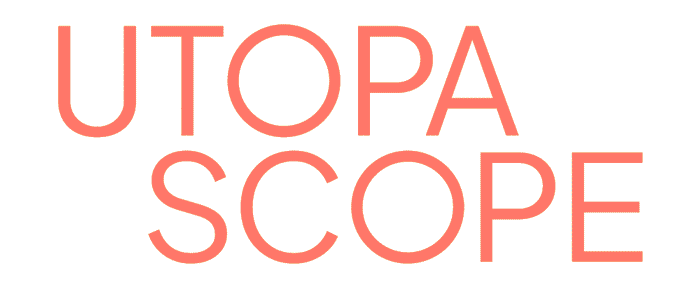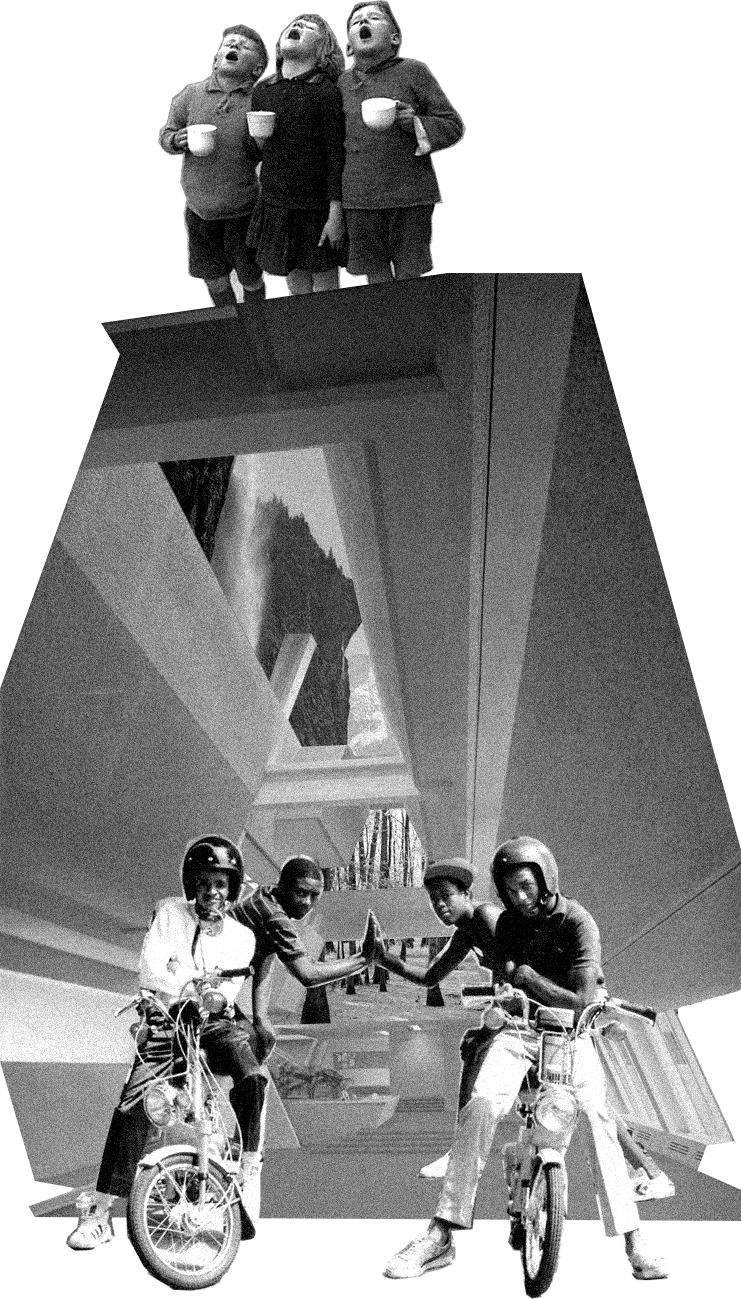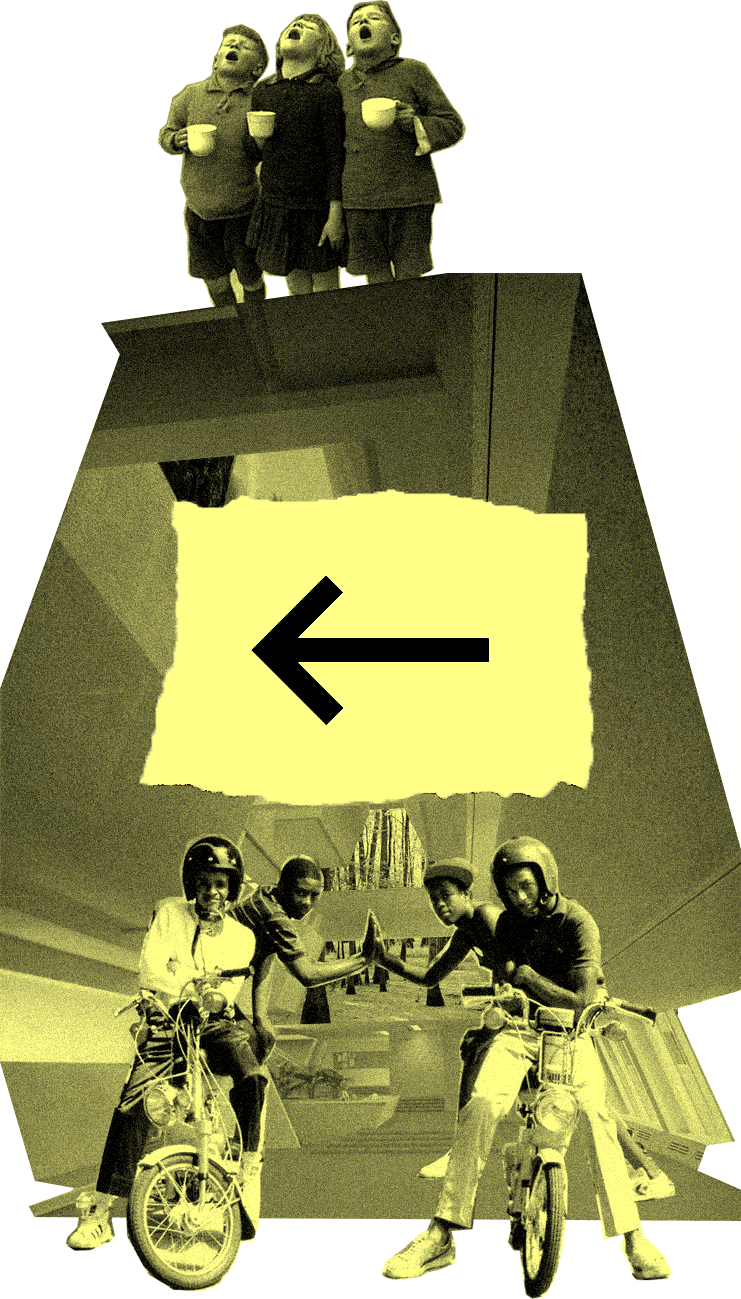Practice de-escalation and transformative justice
vote to organize!
As the idea of defunding or abolishing the police has entered the national conversation, the question of what this could look like is more prevalent than ever. Alexandria Ocasio-Cortez stated that an America with defunded police would look like an affluent white suburb. This analogy is only the modern capitalist example in the U.S., but it illustrates the feelings of many: we should all have the opportunity to move through life unimpeded by militarized, institutionalized violence, with communities supporting ourselves to protect our own futures.
But what replaces the police in their supposed function of protection and peace-keeping? And if we go a step further and overhaul the entire criminal legal system, how is justice served when people inflict harm on one another?
At its core, our current system, punitive—or retributive—justice, responds to harm with more harm. Conflicts are dealt with by the state with little involvement from the greater community. The conditions that cause conflicts are not taken into consideration, and the prevention of crime relies on the threat of punishment. This punishment, which devastates not only the perpetrators, but often the entire community, is doled out disproportionately, feeding the racist prison industrial complex.
Restorative justice, one alternative to the crime-and-punishment system, seeks to repair harms with the involvement of the whole community in a dialog between the victim and the perpetrator. The emphasis in this system is on accountability and healing.
While restorative justice is a step in the right direction, it isn’t enough. Its focus on repairing, or returning to the way things were before the harm was done, ignores the injustices that existed prior to the offense—the conditions that caused the offense in the first place.
Transformative justice, on the other hand, requires us to recognize the societal conditions that lie at the root of the harms we inflict on one another. When we look at these individual harms as part of a larger system of oppression and exploitation, we can simultaneously work to dismantle these systems and heal the harms they’ve caused in our communities.
This practice has a lot in common with restorative justice when it comes to healing conflicts. But in addition to being a broader and more radical approach, it differs in one important way: since the nature of transformative justice is to fight against the capitalist creations of scarcity, misogyny, domination, and abuse, it is up to us—not the government—to implement it. In doing so, we can regain control over our collective well-being and ability to thrive without the ever-present threat of police violence looming over us.
Start organizing by having conversations with friends, neighbors, and other activists who are already working on initiatives like police and prison abolition and drug decriminalization. Discuss with them the specific health and safety needs of your community so that you may set specific and achievable goals.
Draw inspiration from Indigenous and traditional communities without appropriating them. Throughout history, communities managed to progress in ways that provided for the security of all people. Some of Canada’s First Nations communities focus on mediated reconciliation between victim, offender, and community members in non-hierarchical discourse. Aboriginal communities in Australia use the Julalikari Night Patrol in order to help individuals who need help, rather than involve the police with their historical biases and abuses towards people from these communities. Zapatista feminist groups built entire structures as alternatives to state power so that the people wouldn’t need to rely on the state to police them, and to ensure not only that communities were safe, but that they were thriving.
More actionable for communities than the uphill task of actually dismantling the police is organizing to create parallel institutions alongside the police in order to render them redundant and even more purposeless than they already are. So that we can avoid recreating oppressive structures, we shouldn’t wait until the people have gained power before trying this. Instead, we should try to create our own alternatives in our communities, learning about the relationship between power and abuse and how best to avoid abuse in the future.
Education
Start by learning de-escalation, conflict mediation, and intervention techniques. Identify members of the community who have these skills or partner with other organizations that are already practicing them. Host first aid trainings, de-escalation classes, trauma-informed learning, and empathy workshops.
People are best able to stop conflicts from escalating when they empathize with one another. It is important that members of your organization who plan on being in the streets with your neighbors be naturally empathetic people. One recommendation is to encourage rehabilitated offenders to join the de-escalation committee. For those in the group who are not as outgoing or as personable, there are plenty of administrative, tutorial, or information-gathering roles that they can fulfill.
In any scenario, there are a few de-escalation tactics that organizers should keep in mind when interacting with people:
- Always ask for their name.
- Stay calm and maintain a relaxed, nonthreatening, receptive body language.
- Allow them their personal space when they need it.
- Learn situational awareness to recognize objects that someone could use to hurt themselves or another person. Do not call attention to the object; instead, calmly redirect the person.
- Don’t focus on the blame associated with an individual’s fault or a mistake.
- Remind them that if they are looking to reduce harm to themselves, what they do in the future is more important than what they have done in the past.
- Focus on the core of the problems and how to help.
- Center the conversation on the thoughts behind their feelings, what has helped them in the past, and what their needs are.
- Re-state, reframing if necessary, what they are saying so that they may hear that you comprehend and empathize with what they are going through.
- Allow moments of silence, to allow the other person to contemplate and reflect on the situation.
- Ignore any escalations they might make.
- Stay safe and ensure that everyone else is safe.
Committee Planning
Within your organization, define roles and responsibilities, and develop a playbook of pathways to solve varying problems that people may encounter. Make plans for organizers to support each other and work together while not overwhelming people who need help.
Partner with trusted, local social workers, social services, psychologists, and healthcare workers, or fold them in as organizers. If local services and institutions are historically problematic or do not adequately serve the interests and needs of the people, consider creating committees to replace them, with volunteer social workers and mental health workers in autonomous groups, perhaps even as cooperatives.
Seek funding wherever possible. For instance, the Urban Institute provides a Community Investment Tool to help communities secure funding with which they can fund their own safety and security in lieu of police.
Since police must be disarmed, ensure that your community organization remains unarmed. The organization should not engage in a patrolling mindset, favoring quick response times and planned personal entourage services, like a grassroots version of walking escorts that are available on college campuses. The response committee should consist of trained professionals like doctors and social workers to act as first responders. These professionals are more equipped to de-escalate incidents related to mental health crises, domestic violence, addiction, and housing insecurity.
Create a committee to provide commuter services and repair in order to help cyclists, public transportation riders, and drivers to ensure people are able to move about the community safely.
Set up a harm reduction committee within the organization to provide a needle exchange, free rideshare programs, condom distribution, or even a community-run safe injection site. If at all possible, this committee could look into creating a housing program using any vacant properties that may exist in the community through occupation or a rehabilitation cooperative.
The community must organize the form of transformative justice that they want and need, whether that is a community court, peace circle, or transformative justice workshop series. This can take many forms and will be informed by the needs of the community and its history, but can start by learning about other successful examples around the world.
Culture
In your community, create a culture of decriminalization and mutual aid via food cooperatives, neighborliness, and a commons council. Violent crimes make up only a small fraction of arrests, with most of the rest being the kind solved better by transformative justice. The organization must work with the community to openly and defiantly resist police tactics.
In this environment, the goal is to make members of your community more likely to contact your community organization as a liaison for social services and problem solving instead of the police. This will likely require an additional culture of resistance, requiring members of the community to actively refuse patrol-oriented enforcement practices of the local cops. If the community organization uses occupation to operate a housing program, the community must also protect it by resisting police interference.
Work with sex workers in your community to find out what they want, how much involvement they would like in your community organization, and how the organization may best help them. Do not claim to speak for sex workers or advocate for any of their perceived needs without talking to them. Sex work is not monolithic and sex workers have different needs depending upon the conditions of their lives and their backgrounds.
Foster a culture that understands drug abuse and addiction as mental health issues. Community members who grasp this are more likely to contact your organization rather than the police in the event of a crisis, effectively decriminalizing drugs in the immediate community. Invest in community-specific resources to address issues of education, housing, mental health, and employment, which often underlie both violent and nonviolent incidents by troubled individuals.
Until the time comes that the community must oversee the transformative justice organization, work to set up a community oversight committee for the existing police in the interim. Use the experience of operating a civilian oversight board to inform the process of overseeing the community organization in the future.
Justice and Community
Eventually, prevention will fail and a person in the community will wrong another. When this happens, the organization should rely on the transformative justice process that you have laid out. This can take many forms, but should focus on repairing any wrongs that were experienced by the victim, and rehabilitating the offender, getting them the help that they need in order to prevent them from doing harm in the future.
In these situations, the community is involved in the process as much as the victims and offenders. This gives those who are negatively impacted the decision-making power to decide what justice looks like. If the community agrees, the offender is given the tools needed to achieve this repair, in ways where they learn appreciation and empathy for their neighbors, new practical skills, and the kind of dignity that can permanently alter their lives for the better. Programs and facilities focused on enrichment, affirmation, and rehabilitation should replace prisons, which are punishment-driven, impoverishment-oriented correctional facilities. Our communities should look to ourselves as the alternative.
This process is one of the most challenging tactics, and so the community organization should practice patience and build slowly, perhaps starting one project or committee at a time. For instance, the organization could start as simply as a needle exchange program on a single block, or a free ride share program in a small rural village, gradually expanding to encompass conflict mediation, mental health services, housing services, traffic services, and harm reduction services.
Look to the community to find out what services are needed and what their concerns would be in the absence of the police. Seek to build a new system, piece by piece, that not only takes the place of the police and criminal legal system, but flexes and shifts with the changing needs of the community, working to improve the lives of all of its members. We can still fight for defunding the police, but as our transformative justice systems become more and more robust, there will be no work left for the police to even do.
Next: Reduce stress under Wellness




